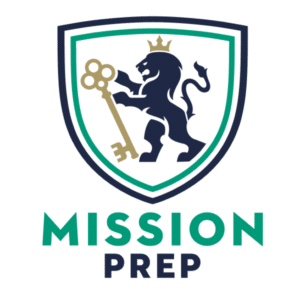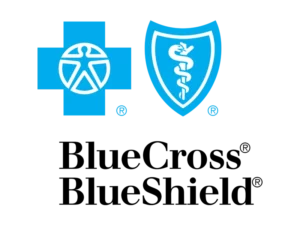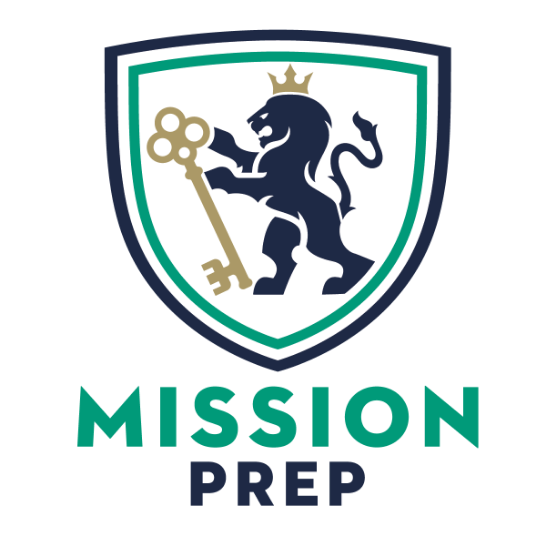Psychiatric Assessments in Teens and Young Adults

For many teens, mental health challenges don’t just result in a period of low mood that passes. The stats show us that suicide is the second leading cause of death for kids starting from as young as 10 years old.1 That statistic alone sounds and is dramatic, especially when you consider that for every loss of a child or teen in the US, there are thousands struggling with challenges and feelings. Challenges which they haven’t yet learned how to overcome or manage.
Depression, bipolar disorder, and schizophrenia, alongside other mental health conditions, are said to often make a first appearance in adolescence. Yet, despite this, a surprising amount of young people fall through the cracks because the symptoms are often overlooked as a “phase” when they’re anything but.
That’s why teen psychiatric evaluations matter. Mental health assessments bring clarity when everything feels tangled. At Mission Prep, we don’t just run through checklists with our teen patients. We go a step further to fully understand what each teen is going through. Teens require a unique approach when it comes to diagnosing and treating mental health, and our evaluations are designed with this in mind.

What Is a Psychiatric Assessment for Teens and Young Adults?
A psychiatric assessment gives insight into a teen’s emotional and mental well-being. It helps figure out whether certain behaviors or feelings point to a specific condition – and just as importantly, what to do next.
At Mission Prep, licensed professionals who understand the ups and downs of adolescence lead these evaluations. We have a deep understanding of psychiatric disorders in teenagers. We don’t work with the goal of rushing to a psychiatric diagnosis or slapping on a label. We take the time to listen and observe what a teen is going through, so we can understand what life feels like for them.
If the signs suggest a condition like bipolar disorder or raise questions about schizophrenia, for example, our teenage bipolar assessment or relative assessment can help map a way forward. So, rather than feeling overwhelmed and uncertain, a teen can take their next steps with some confidence and clarity.
Youth Behavioral Health Assessment vs. Psychiatric Assessment
Though the terms are sometimes used interchangeably, a youth behavioral health assessment is more general. It looks at a teen’s habits, mood, and environment to spot concerns like academic issues and social difficulties. A psychiatric assessment, on the other hand, digs deeper – focusing on diagnosing mental health conditions and developing a clinical treatment plan.
At Mission Prep, both assessments can work together. Behavioral observations help paint a full picture, while psychiatric testing provides the clinical insight needed to address serious conditions like mood disorders or psychosis. This combination helps us get a full picture of what’s driving a teen’s behavior.
In fact, research shows how effective this can be. One study of 2488 high school students found that around 74% were at risk for mental health challenges and weren’t receiving treatment at the time.² After the screening, which brought the risks to light, around 76% of the participating students went for at least one mental health appointment within 3 months. Around 57% went on to receive further treatment. This is just one of many studies that highlight just how important comprehensive mental health assessments are in adolescents. They’re often a crucial step to getting support.
What Does a Psychiatric Assessment Consist Of?
At Mission Prep, every youth psychiatric testing assessment begins the way any meaningful support should: with a real conversation. A licensed clinician meets with the teen and their family to gather context about what’s been happening, what concerns are showing up, and how those patterns are affecting daily life. This is the start of everything; helping to lay the groundwork for the support to come.
From there, the process becomes more structured. A full mental health intake for adolescents typically includes:
- A deep dive into the teen’s medical history, emotional well-being, and current behaviors
- Standardized psychiatric testing that screens for a range of mental health disorders
- Diagnostic interviews that explore how the teen processes emotions, handles stress, and thinks about themselves and others
- Screening tools to assess for developmental concerns, learning difficulties, or cognitive delays that could complicate a diagnosis
These assessments are designed to be thorough but never overwhelming. The goal isn’t to label a teen too quickly or add stress to an already difficult moment. It’s to build a roadmap to getting the right psychiatric services for youth treatment. The more complete the picture, the more targeted and effective the treatment plan will be.
That level of detail matters in an adolescent psych evaluation. Here’s why: a 2023 study found that around half of teens with mental health disorders are undiagnosed until the symptoms become severe or disrupt regular life.³ When conditions like schizophrenia and bipolar are left undiagnosed, the symptoms can escalate which leads to stressful hospitalization or long-term functional challenges.
Other research shows that structured clinical interviews and validated psychiatric testing (instead of solely using observational methods) can improve the accuracy of the diagnosis by up to 30%.⁴ That’s why Mission Prep combines multiple tools like interviews, observations, screenings, and testing. We believe that each layer adds clarity.
Most importantly, this process also allows teens to feel heard. Many arrive nervous and unsure of what to expect. But when the conversation is compassionate and the questions are thoughtful, the fear often fades. And what tends to remain is a sense of relief. Finally, someone sees what they’ve been struggling to say.
Conditions Commonly Diagnosed Through Psychiatric Assessments
Psychiatric assessments help pinpoint what a teen is struggling with and why it might be happening. While every young person’s experience is unique, some conditions tend to show up more often in mental illness evaluations for youth.
- Mood disorders: Mood disorders like major depressive disorder and bipolar disorder, often emerge during the teen years. These conditions can influence everything from energy levels to sleep habits to the ability to concentrate at school. A psychiatric exam helps differentiate between typical emotional ups and downs and something more serious.
- Anxiety disorders: Anxiety disorders are another common finding. Teens might describe constant worry, fear of social situations, or panic attacks. These symptoms can be tough to spot without asking the right questions, especially when they hide behind good grades or a smile.
- Psychotic disorders: Psychotic disorders including schizophrenia, typically begin in late adolescence or early adulthood. Early signs like paranoia, disorganized thinking, or flat affect can easily be confused with behavior issues unless teen schizophrenia evaluations are done carefully. Research shows that early identification and treatment during the first episode of psychosis dramatically improves long-term outcomes.⁵
And these are just a few of many. At Mission Prep, we also see other mental health challenges quite commonly. These include the likes of ADHD, eating disorders, OCD, and PTSD. While there are many common conditions, it’s important that a teen receives the most accurate diagnosis based on thorough evaluation, not assumptions.
How to Plan for Treatment After Diagnosis
Once a diagnosis is confirmed, the next step is building a treatment plan that actually fits the teen’s life, not just their diagnosis. At Mission Prep, that means working closely with both the teen and their family to create a roadmap forward. Plans might include:
- Therapy sessions such as cognitive-behavioral therapy (CBT), eye movement desensitization and reprocessing (EMDR) therapy, or transcranial magnetic stimulation, depending on what the teen needs.
- Medication management when appropriate, with careful monitoring.
- Family support and education to ensure home life reinforces treatment goals.
- School accommodations when academic support is needed.
- Ongoing assessment, because needs can shift as a teen grows and psychiatric treatment planning for teens isn’t a one-time event, it’s a dynamic process. Providers at Mission Prep regularly review and adjust the plan to make sure it’s working, offering flexibility without losing structure. For teens, that sense of agency and routine can be life-changing.
Supporting a Troubled Teen Through the Process
For families, booking a psychiatric exam for troubled teens can feel overwhelming. Watching a teen struggle is hard enough. Navigating mental health care shouldn’t add more stress.
The key is open, non-judgmental communication. Keep the conversation going. Ask how they’re feeling, and really listen. Let them know that needing support doesn’t mean they’ve failed. It means they’re brave enough to do the hard work of healing.
It also helps to involve them in decisions. Teens are more likely to engage in treatment when they feel heard and respected. Whether it’s choosing a therapist or setting small goals, involvement can give them a sense of control in a time that may feel uncertain.
Mission Prep provides empathetic support for teens in treatment and the entire family. When a young person is struggling, it affects everyone, and healing works best when everyone is on the same page.

Connect With Youth Psychiatric Professionals
If you’ve noticed changes in your teen’s mood, behavior, or functioning and you’re not sure what’s going on it might be time to take a closer look.
Mission Prep offers in-depth psychiatric evaluations tailored to teens and young adults. Our experienced team takes time to understand each teen we work with and uncover not just their symptoms, but what’s underneath them.
You don’t need to wait for things to get worse. Reach out to Mission Prep to schedule a consultation or learn more about our programs for in-depth teen psychiatric diagnosis. And if your teen needs more intensive support due to a severe mental health condition, you can check out our facilities here.
References
- Centers for Disease Control and Prevention. (2025, March 26). Facts about suicide. U.S. Department of Health and Human Services. Retrieved April 24, 2025, from https://www.cdc.gov/suicide/facts/index.html
- Husky, M. M., Sheridan, M., McGuire, L., & Olfson, M. (2011). Mental health screening and follow-up care in public high schools. Journal of the American Academy of Child & Adolescent Psychiatry, 50(9), 881–891. https://pubmed.ncbi.nlm.nih.gov/21871370/
- Piao, J., Huang, Y., Han, C., et al. (2023). Treatment Rates for Mental Disorders Among Children and Adolescents: A Meta-analysis of 40 Studies. JAMA Network Open, 6(3), e2310184. https://jamanetwork.com/journals/jamanetworkopen/fullarticle/2810825
- Nordgaard, J., Revsbech, R., Saebye, D., & Parnas, J. (2012). Methods to improve diagnostic accuracy in a community mental health setting. The American Journal of Psychiatry, 157(10), 1599–1605. https://doi.org/10.1176/appi.ajp.157.10.1599
- Kane, J. M., Robinson, D. G., Schooler, N. R., Mueser, K. T., Penn, D. L., Rosenheck, R. A., … & Heinssen, R. K. (2016). Comprehensive versus usual community care for first-episode psychosis: 2-year outcomes from the NIMH RAISE Early Treatment Program. The American Journal of Psychiatry, 173(4), 362–372. https://psychiatryonline.org/doi/10.1176/appi.ajp.2015.15050632

















